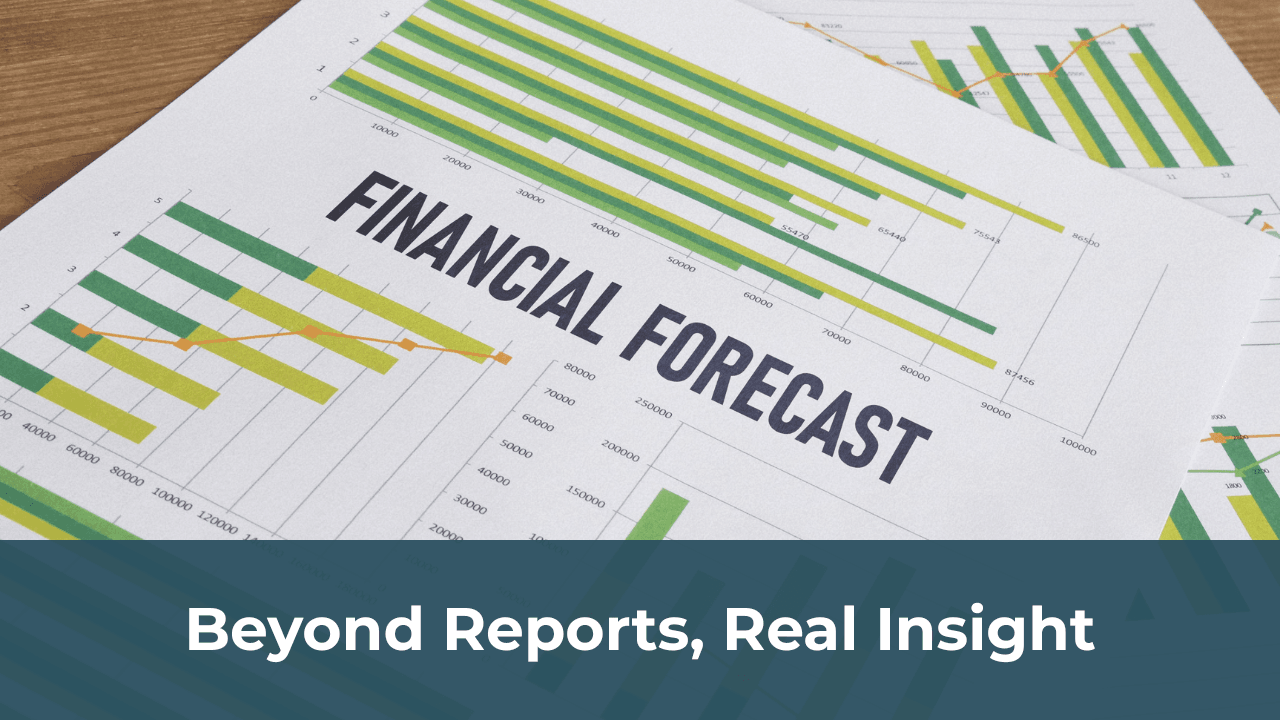5 Key Comparisons in Financial Reporting vs Analysis
If you’re running a business, chances are you’ve seen reports filled with numbers revenue, expenses, profit margins. But do those numbers mean anything if you’re not acting on them?
That’s where the distinction between financial reporting vs analysis becomes crucial.
While financial reporting focuses on organizing data, financial analysis interprets it to drive decisions. Many small and mid-sized business (SMB) owners mistakenly think they’re doing one when they’re barely scratching the surface of the other.
In this blog, we’ll explain what financial reporting vs analysis are, how they differ, why each is important, and how combining them can unlock better business performance.
What Is Financial Reporting?
Financial reporting is the process of collecting, organizing, and presenting your company’s financial data in a structured format. The goal is to create clear, accurate, and standardized reports.
Typical financial reports include:
- Profit & Loss Statement (Income Statement)
- Balance Sheet
- Cash Flow Statement
- Statement of Owner’s Equity
- Budget vs. Actual Reports
These reports are usually generated monthly, quarterly, or annually and help stakeholders owners, investors, lenders, accountants understand the financial state of the business.
In short, financial reporting tells you what happened.
What Is Financial Analysis?
Financial analysis takes those reports and extracts meaning from the numbers. It involves reviewing trends, comparing ratios, identifying risks, and making forecasts.
Key financial analysis tools include:
- Ratio analysis (e.g., gross margin, current ratio)
- Variance analysis
- Forecasting models
- Break-even analysis
- Trend comparisons over time
Where reporting organizes data, analysis turns it into action. In short, financial analysis tells you what it means and what to do next.
Reporting vs Analysis: A Simple Comparison
|
Feature |
Financial Reporting | Financial Analysis |
|
Purpose |
Summarize past data |
Interpret and predict |
|
Focus |
Accuracy & structure |
Strategy & insight |
|
Output |
Reports & statements |
Insights, ratios, forecasts |
|
Frequency |
Regular (monthly, yearly) |
As needed or ongoing |
|
Users |
Accountants, bookkeepers |
Owners, managers, advisors |
Think of financial reporting as the ingredients and analysis as the recipe that turns them into a meal.
Why SMBs Need Both Reporting and Analysis
Most SMBs produce reports especially around tax time but very few engage in true financial analysis. This creates blind spots.
Without analysis:
- You don’t know why margins are shrinking
- You can’t explain fluctuating cash flow
- You miss red flags like rising customer acquisition costs
- You can’t forecast or make data-driven decisions
On the other hand, analysis without reliable reports is just guesswork. You need both sides to run a sustainable, growth-ready business.
Real-Life Example: From Reporting to Insight
A New York–based logistics startup regularly produced P&L reports showing decent profits. But they couldn’t figure out why cash was always tight.
Upon analysis, they found:
- High accounts receivable aging (clients paying late)
- Rising delivery costs not visible on the P&L
- A drop in gross margin due to poorly negotiated contracts
The reports were accurate but they needed analysis to uncover the issues.
Key Benefits of Financial Reporting vs Analysis
- Improved decision-making
- Better cash flow visibility
- Early detection of financial risks
- More confident investor/lender presentations
- Accurate budgeting and forecasting
- Stronger long-term strategy
Together, reporting and analysis help you shift from reactive to proactive management.
How to Integrate Analysis into Your Monthly Workflow
Step 1: Generate reports from your accounting system (QuickBooks, Xero, etc.)
Step 2: Schedule a monthly review session (15–30 minutes)
Step 3: Ask questions:
- Are expenses rising? Why?
- Is revenue seasonal? How does that affect planning?
- Are we hitting profit goals?
Step 4: Document findings and decisions
Step 5: Adjust budgets, pricing, or strategy based on insights
You don’t need to do this alone. A qualified analyst or outsourced reporting partner can guide you.
Tools That Help with Financial Reporting and Analysis
- QuickBooks Online (report generation, budget tracking)
- Google Sheets (trend tracking, dashboards)
- Microsoft Excel (custom models, analysis)
- Power BI or Google Data Studio (visual reporting)
- FathomHQ or Syft (analytics plug-ins for accounting software)
Tip: Choose tools that match your business size don’t over-invest in tools you won’t use.
Mistakes to Avoid
- Generating reports and never reviewing them
- Treating reports like paperwork instead of decision tools
- Doing analysis only at year-end
- Not involving stakeholders (e.g., department heads, advisors) in review
- Overcomplicating your metrics with vanity KPIs
Stick to a few key metrics, review them consistently, and act on what you learn.
Financial Reporting vs Analysis: A Growth Catalyst
Many successful SMBs attribute growth not to a single decision but to consistent, data-backed decision-making. That starts with clean reporting and structured analysis.
Whether it’s pricing, hiring, marketing, or expansion your financials are trying to tell you something.
How VASL Helps Small Businesses Decode the Numbers
At VASL, we provide U.S.-based SMBs with:
- Monthly financial reports prepared by experts
- Visual dashboards with key trends
- Variance, ratio, and custom performance analysis
- Budget forecasting and cost analysis
- Insights tailored to your business goals
You get more than spreadsheets you get clarity.
Final Thoughts
If you’re only looking at reports during tax season, you’re missing opportunities and exposing your business to risk.
Financial reporting vs analysis aren’t just for large corporations. They’re essential tools for every small business owner who wants to stay profitable, competitive, and strategic.
Want help turning reports into decisions? Let’s make your numbers work for you.
Book a Free Consultation: Here
Or Email us at saman@vasl.team
